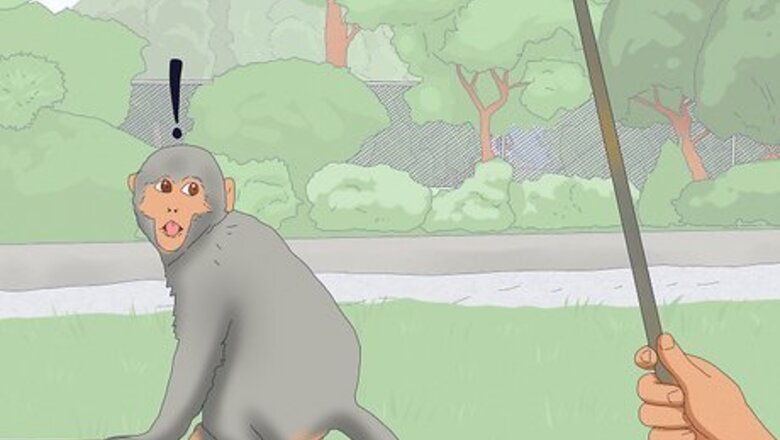
views
Repelling Monkeys
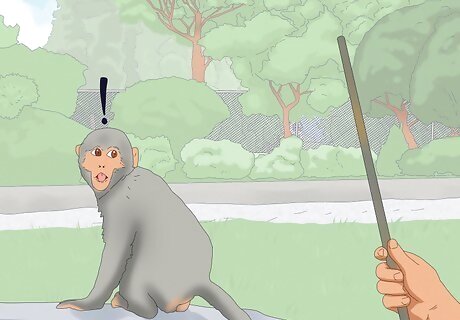
Scare them off. If you do find a monkey has entered a residential area you shouldn't panic, but you should be prepared. Keep some big sticks, a hose, or another water spraying device handy at home. If you see a monkey you can scare if off without harming it. Monkeys will quickly learn that your neighbourhood is not a good place for them to return to. Do not approach the monkey directly, do not stare at it, and do not try to corner it. Identify an exit and encourage the monkey to leave by hitting the ground with a stick. Never hit a monkey. A strong jet of water directed toward the monkey can also encourage it towards the exit. If there are juveniles in a group of monkeys be especially cautious. Lower your head, keep your distance and move away.

Build an electric fence. In extreme circumstances, it might be necessary to construct an electric fence around your settlement to stop monkeys from entering. This is not a straightforward task, and you should ensure you have taken the less dramatic steps of securing all bins and closing off any food sources before considering this. There is evidence that electric fences are effective at containing monkeys, and are unlikely to harm the animals if done correctly, but you will need expert help for this. If you think your monkey problem is this serious, contact a local government representative and ask them about electric fencing. If will not be cheap and in no circumstances should you attempt this on your own.
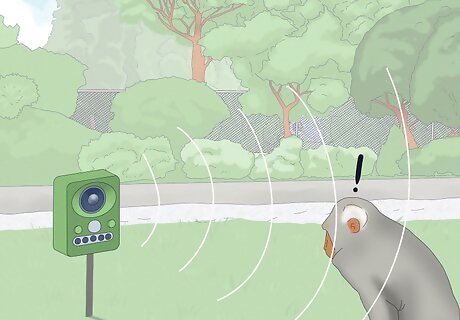
Deploy an electronic sound repellent. Increasingly, places and institutions frequented by monkeys are turning to ultrasound repellent devices to ward off the monkeys. These devices tend to be used where there are lots of people coming and going and it is hard to ensure that no rubbish or food waste is left accessible to monkeys in the area. The sounds cause stress and discomfort for monkeys in the area, who will move away and avoid the sound. The impact on the monkey's health and well-being is uncertain, and the preventative methods should be used in the first instance.
Discouraging Curious Monkeys

Pick the fruit from your trees. If you have fruit trees around your house or in your neighbourhood don't forget that these are a potential food source that could attract monkeys. You should harvest any fruit trees as soon as possible in order to reduce the chances of monkeys finding the fruit. If this is a consistent problem, consider whether you should continue to cultivate fruit trees. If you are growing vegetables in the ground, be sure to cover them with a strong wire mesh that is designed to resist primates.
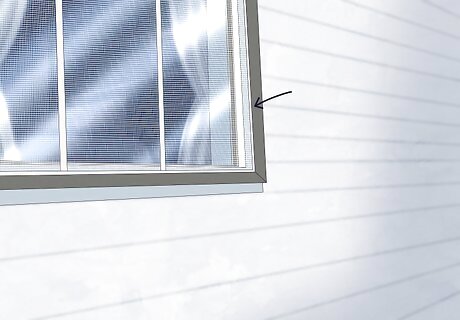
Monkey-proof all the houses. As well as securing all the bins, it is also important not to make it easy for monkeys to enter your house to look for food. To do this, ensure that all windows are secured. You can simply close the windows, or monkey-proof them with a mesh covering. Meshing a window and keeping food out of sight will discourage curious monkeys.

Avoid the use of plastic bags. If you have monkeys in the area you should avoid using plastic bags as much as possible when you are walking around. Put any plastic bags inside canvas bags instead. Monkeys are curious and will snatch plastic bags which have food in and forage through rubbish bags. They can easily tear through the plastic so ensure they do not have the opportunity.

Spread the word. If you live in an area that borders the edge of a forest where monkeys live, it's important that you make sure your neighbours understand what to do to discourage monkeys from entering your residential area. If you secure the bins, close windows, and don't feed the monkeys, but other people aren't so vigilant the problem won't be solved. Be sure to speak to your neighbours and explain how discouraging monkeys is the most effective way to deal with it. Education and awareness raising are essential for long-term solutions to be successful. You need everyone to buy in and take responsibility.
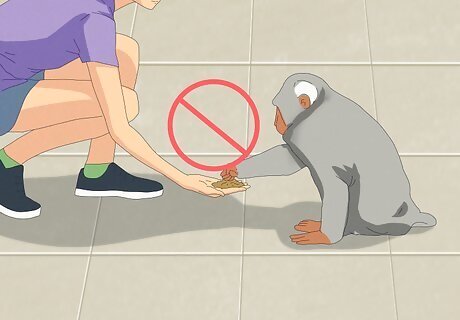
Don't feed monkeys. As well as ensuring that food waste and rubbish areas are closed off and monkey-proofed, it is essential that you and your neighbours do not feed monkeys in the area. If the monkeys get fed they will come back looking for more food. You can try to cut off their access to human sources of food so they continue to forage in their natural habitat not in urban areas. Do not feed monkeys or any other wild animals or you will attract them to where you live and make repelling them much harder. Preventing and discouraging the monkeys from entering human settlements is the most important first step. Once monkeys know there is a food source they are likely to visit every day.
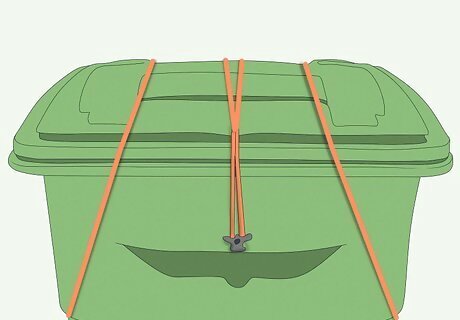
Use fully secured bins. It is most likely that monkeys will be attracted to residential areas if they think they can access food easily. Before you think about installing any alarms or security devices to repel moneys you should make sure you are not encouraging them to enter your neighbourhood. The first thing to do is check that there are no open or inadequately secured bins which monkeys can gain easy access to. Use monkey-proof bins which can be properly secured and will not attract monkeys. You can secure bin lids with an elastic strap or bungee cord. Tie all refuse bags with a double-knot and make sure that no food waste is left lying around, or spilling out of the bins. Having easily accessible food in rubbish areas will encourage monkeys to move further into residential areas and even enter houses.



















Comments
0 comment